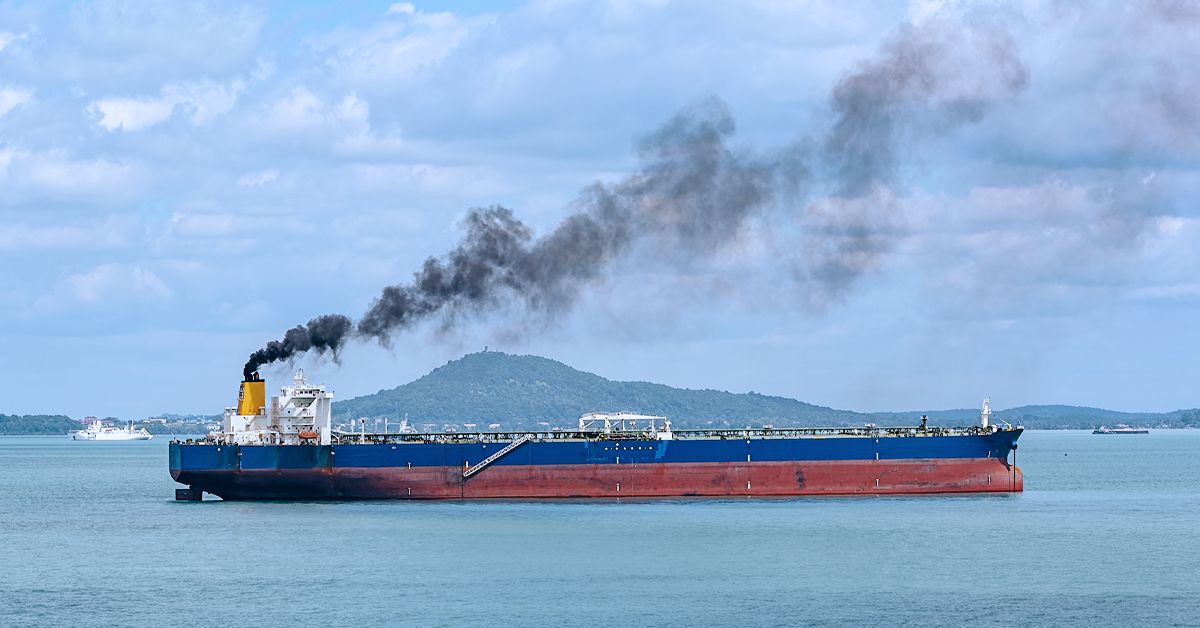
Landmark IMO deal set to shake up shipping
LONDON : Adecisive moment for global shipping regulation unfolded last week as the International Maritime Organization’s (IMO) Marine Environment Protection Committee (MEPC) concluded its 83rd session, which culminated in the approval of draft amendments establishing the ‘IMO Net-Zero Framework’.
This global mechanism will combine mandatory greenhouse gas (GHG) limits with carbon pricing for the maritime sector and represents a move towards achieving the goals laid out in the IMO’s 2023 GHG Strategy, which targets net-zero emissions from international shipping by or around 2050, supported by interim reduction goals for 2030 and 2040.
Hailed by the IMO as a world-first for any industry sector, the measures are set to apply to large vessels over 5,000 gross tonnage – the segment responsible for about 85% of shipping’s CO2 emissions.
IMO secretary-general Arsenio Dominguez was in a celebratory mood at the end of proceedings: “The approval of draft amendments to MARPOL Annex VI mandating the IMO net-zero framework represents another significant step in our collective efforts to combat climate change, to modernize shipping and demonstrates that IMO delivers on its commitments.”
Framework mechanics
The Net-Zero Framework, to be integrated into MARPOL Annex VI, Chapter 5, is built upon two key pillars: a global fuel standard and an economic measure. MARPOL Annex VI, with its wide ratification covering 97% of global tonnage, provides the existing legal foundation.
The Global Fuel Standard requires ships to progressively decrease their annual greenhouse gas fuel intensity (GFI). Calculated on a well-to-wake basis, the GFI measures GHG emissions per unit of energy used. Ships must meet increasingly stringent GFI reduction targets over time, driving the adoption of lower-emission fuels and technologies.
Complementing this is the Global Economic Measure, introducing a GHG emissions pricing mechanism. Vessels exceeding the permitted GFI levels will need to acquire “remedial units” to cover their emissions deficit. Conversely, high-performing ships using zero or near-zero (ZNZ) GHG technologies, achieving emissions below a tighter ‘Direct Compliance Target’, can earn financial rewards and tradable “surplus units”.
Compliance incorporates flexibility. Ships can meet their obligations by acquiring surplus units from others, using previously banked units, or purchasing remedial units via contributions to a new central fund.
A cornerstone of the economic measure is the establishment of the IMO Net-Zero Fund.
This fund will pool the contributions generated by the emissions pricing. Its revenues are strategically allocated to support the sector’s decarbonisation: rewarding low-emission vessels, funding innovation, research, and infrastructure development (especially in developing nations), supporting training and capacity building under the GHG Strategy, and, critically, mitigating adverse impacts on vulnerable states like SIDS and LDCs, underpinning a just and equitable transition.
Ambition under scrutiny
However, the framework’s approval was met with caution from environmental advocacy groups. Transport & Environment (T&E) acknowledged the step forward but argued the current draft “will fall short of delivering” the IMO’s own 2030 and 2040 targets, and is insufficient for the Paris Agreement’s 1.5°C goal.
T&E’s analysis suggests projected annual revenues of around $10 billion until 2035 will be inadequate to properly incentivise the crucial uptake of scalable ZNZ fuels like green e-fuels.
They estimate funding for ZNZ support could run out by 2032 without additional measures.
Furthermore, T&E raised concerns about the framework’s neutrality on fuel types, warning it could unintentionally favour cheaper, first-generation biofuels from feedstocks like palm oil or soy. They argue reliance on these could undermine genuine emissions savings due to deforestation impacts.
Faig Abbasov, T&E’s shipping director, offered a balanced view: “Multilateralism isn’t dead… the IMO deal creates a momentum for alternative marine fuels.” But he added: “Unfortunately it is the forest-destroying first generation biofuels that will get the biggest push for the next decade. Without better incentives for sustainable e-fuels from green hydrogen, it is impossible to decarbonise this heavy polluting industry.” He concluded that national policies are now needed to support truly sustainable options.
Cleaner air milestone
MEPC 83 also marked progress on regional air pollution, approving a new Emission Control Area (ECA) for the North-East Atlantic. This designation enforces stricter limits on SOx, NOx, and particulate matter emissions, yielding significant air quality, health, and ecosystem benefits.
As the world’s largest ECA, it covers waters off the Faroe Islands, France, Greenland, Iceland, Ireland, Portugal, Spain, and the UK, connecting existing ECAs in Northern Europe and the Mediterranean. The proposal, based on research by the International Council on Clean Transportation (ICCT) and Porto University, was submitted jointly by the EU27, UK, and European Commission. ICCT senior researcher Liudmila Osipova said that the approval “reflects a strong international commitment to cleaner shipping.
It’s a crucial step toward improving air quality and protecting public health and marine ecosystems for the long term.”
The journey for the Net-Zero Framework now enters its formalisation phase. The draft MARPOL amendments will be circulated to Member States before a planned extraordinary MEPC session in October 2025 (MEPC/ES.2) for final adoption. Detailed implementation guidelines are slated for approval at MEPC84 in Spring 2026. Following the standard MARPOL timeline, the regulations are anticipated to enter into force 16 months after adoption, likely in 2027.
While the approved framework provides a structure, its ultimate success will hinge on the detailed negotiations ahead – refining targets, finalising economic measure mechanics, ensuring robust fund governance, and addressing sustainability concerns around fuel pathways. Global shipping will need to watch closely as the final details emerge, as the industry starts to prepare for a markedly different operational landscape.
Source: Baltic Exchange
